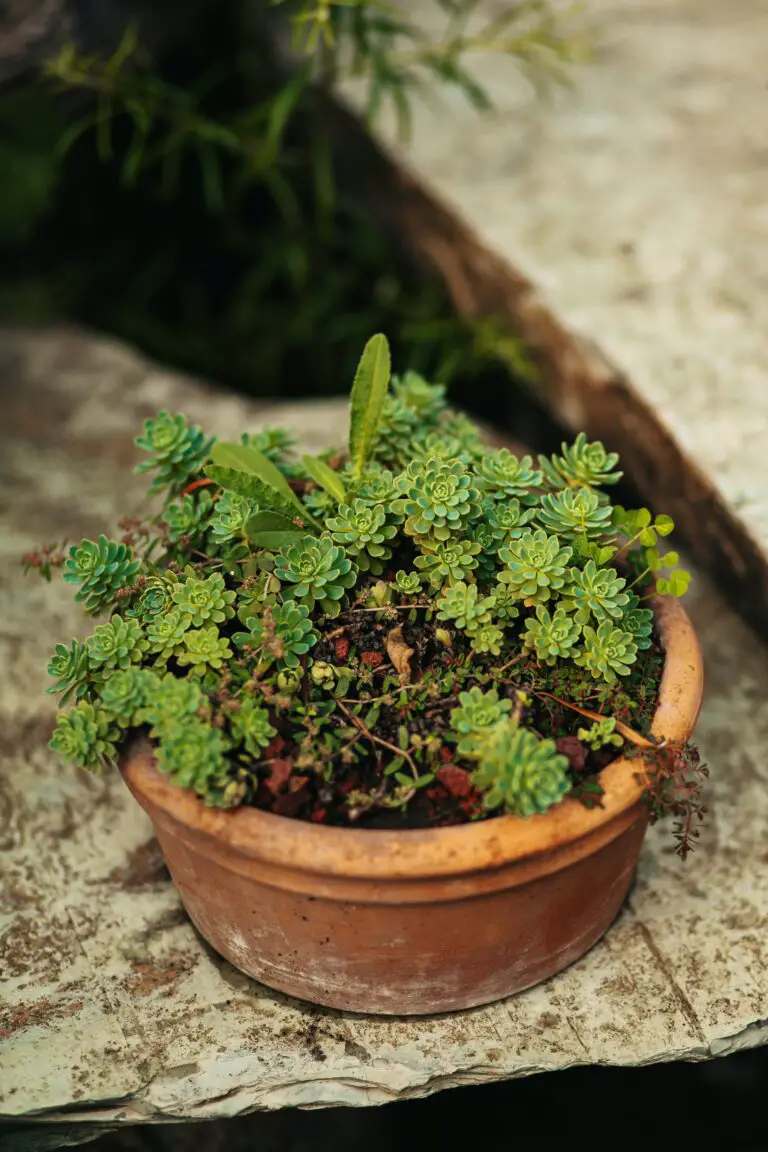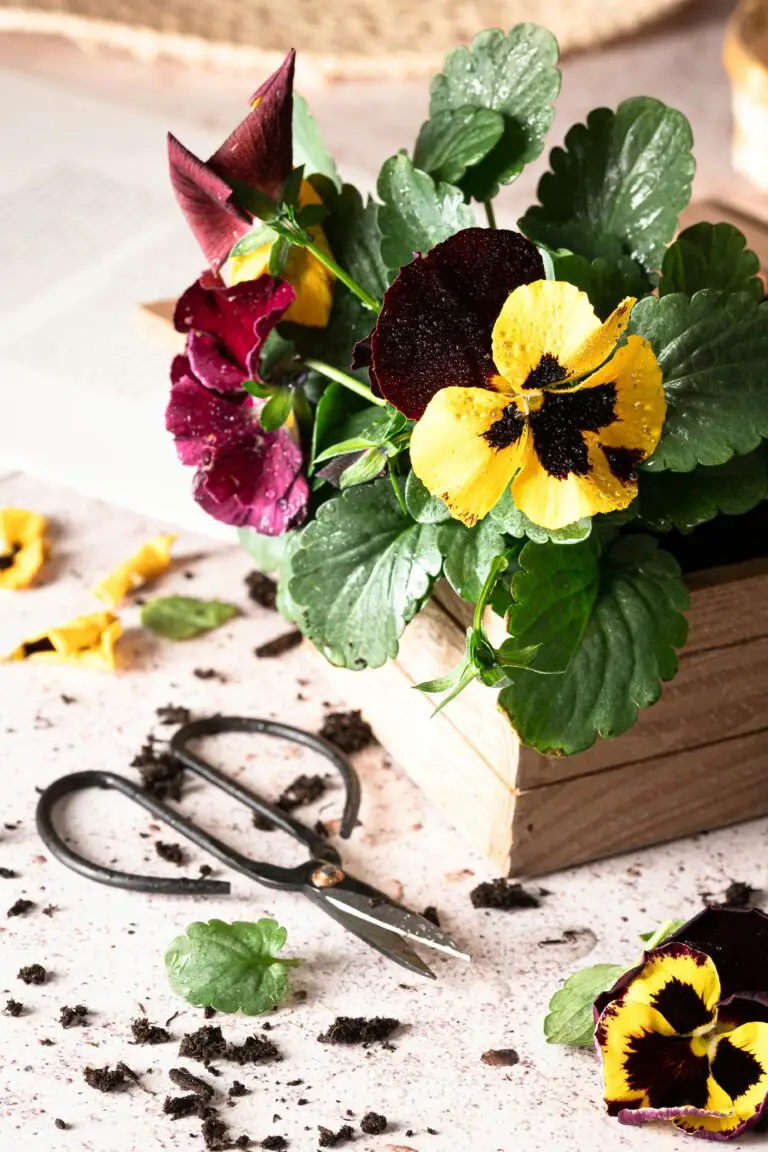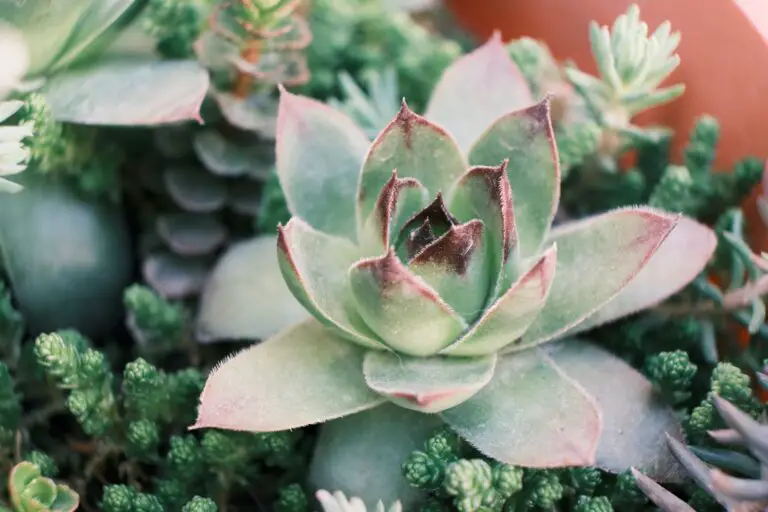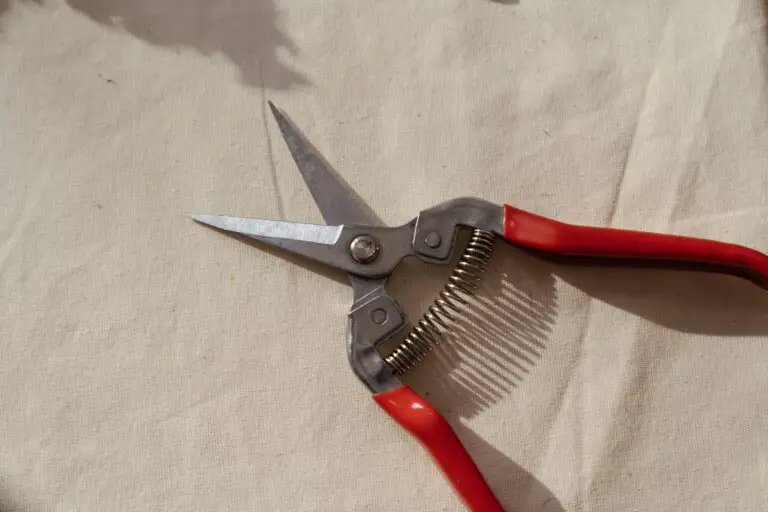Introduction to Sedum and Pruning Necessity
Picture this: a lush carpet of sedum plants, each cluster brimming with vibrant life and color. Now imagine those same sedums, reaching such unmanageable heights they begin to collapse under their own weight. Here enters the underrated hero of horticulture – pruning! For garden enthusiasts and green thumb aspirants alike, the act of trimming sedum plants is not just a chore, it’s a strategic step in the dance of gardening.
Sedum, a genus of over 400 species of succulents, is known for its hardiness and ease of care. But to truly thrive, these plants demand attention come pruning time. It’s about more than just keeping appearances; it’s about guiding the plant to invest its energy wisely. Regular pruning can prevent sedums from becoming leggy and sprawling, encouraging a more compact and aesthetically pleasing form.
Consider the sedum ‘Autumn Joy,’ a real spectacle in the fall garden with its deep pink flowers. Without proper pruning, this beauty might succumb to a less joyful, flopped-over state. But with thoughtful snips, gardeners can maintain the upright, clustered look that makes ‘Autumn Joy’ a showstopper. This not only enhances its charm but improves plant health, air circulation, and even increases flower production.
Embedding real-life scenarios, let’s take a look at how to prune your sedum through a detailed video. Whether it’s your first foray or you’re a seasoned pro, pruning is a vital skill for any plant enthusiast, aiming to showcase sedum at its best.
No two sedums are exactly alike, and neither are their pruning needs. Through the seasons, these succulent beauties will signal when it’s time to get trimming, aiding you in crafting a garden scene brimming with health and beauty. It’s time to take those shears, channel your inner gardener, and let your sedums shine!
Understanding Different Sedum Varieties
Step into the fascinating world of sedums, and you’ll find a splendid array of species each flaunting their unique charm in your garden. It’s not just about their vibrant bursts of color; it’s also about understanding the patchwork quilt of pruning needs that come with this diverse group. Pruning isn’t a one-size-fits-all affair – certainly not with sedums!
Take, for instance, the ‘Autumn Joy’ variety. Picture a late summer garden, and there it is, standing tall with its broccoli-like heads that slowly blush into a deep rose as the season fades. ‘Autumn Joy’ asks for a different pruning approach than, say, the ground-hugging ‘Dragon’s Blood,’ which spills ruby-red across your rockery. While ‘Autumn Joy’ benefits from a springtime trim to encourage a fuller shape, ‘Dragon’s Blood’ requires a gentle hand to remove only the wounded warriors after winter’s retreat.
The sedum spectacle continues with species like the ‘Cape Blanco’ whose powdery, silver foliage crowns it as the king of contrasts against darker expanses of the garden soil. It’s a robust type, tolerant of neglect, but a quick snip here and there can prevent overcrowding and maintain its regal bearing.
Now imagine stepping into your garden, armed with secateurs, ready to tailor each sedum to its own special needs. It’s not just about fostering growth; it’s about sculpting a living artwork. Whether it’s the stonecrop variety with its star-shaped flowers or the globular clusters of ‘Thundercloud,’ each requires a unique touch in timing and technique to reach their fullest potential.

If you’re feeling uncertain about how to kickstart your sedum pruning adventure, a great resource is this encompassing pruning guide that can shed light on the path to take for each species.
But remember, tending to your sedum collection isn’t just about the annual prune; it’s also about year-round care and cultivation that ensures these succulent beauties keep turning heads season after season.
Sedum by the Seasons: A Year-Round Pruning Calendar
Imagine the perennial clockwork of gardening as each season ushers in its own set of tasks. In spring, sedums burst with eagerness, pushing forth new growth – it is then that we must prune to shape and direct. Come summer, the sprawlers may need a mid-season trim to keep them from overtaking their neighbors. As autumn arrives, those left to seed will promise a spectacle of frost-kissed blooms. And in winter’s quiet, we reflect and prepare for the cycle to begin anew with a restorative prune.
Each snip and trim is a dialogue with nature, a way of joining the conversation that every sedum species is eager to have with you, the mindful gardener.
Essential Pruning Tools and Their Proper Use
When it comes to enhancing the charm of your garden with sedum plants, having the right tools on hand is like having the perfect paintbrush for a masterpiece. Just imagine trying to sculpt a beautiful bonsai without the precise snip of specialized shears – unthinkable, right? So let’s dive into the toolbox of a savvy sedum pruner.
Snip in Style: Proper Pruning Shears
The foundation of any sedum pruning project is a pair of sharp, reliable pruning shears. These are not your average scissors. Designed for precision, they’ll slice through sedum stems with the finesse of a chef’s knife through garnish. Bypass shears, with their curved, scissor-like blades, are particularly effective. They make a clean cut that promotes quick healing, reducing the risk of disease – nobody wants a bout of fungi crashing their garden party.
Disinfecting: The Secret to Disease-Free Pruning
Now, let’s talk hygiene. Would you use the same cutting board for onions and fresh fruit without a scrub down? Similarly, disinfecting your pruning tools before moving from plant to plant is a critical step. A simple swipe with rubbing alcohol or a bleach solution can mean the difference between healthy sedums and a garden quarantine scenario.
Here’s a real-life tip straight from the gardening gurus: after each snip session, give your tools a soap opera-worthy bath. It’s one of those practices that separates the pros from the hobbyists – plus, your sedums will thank you with robust growth, free from the clutches of contagion.
Getting a Grip: Ergonomic Handles
Ever tried to prune an entire border of sedum with tools that felt like they were designed for a robot’s grip? Ergonomic handles are a game-changer. They’re like the heated seats in a luxury car – you never realized how much you needed them until you’ve experienced the comfort. With a tool that feels like an extension of your hand, you can prune with the grace of a ballerina, ensuring each sedum gets the VIP treatment it deserves.
Investing in these tools is not just about effectiveness, but also about the joy of gardening. When you feel like a pruning Picasso, you connect with your plants on a deeper level. And isn’t that the true essence of gardening?
Don’t forget that sedum’s resilience makes it a fabulous choice for any rock garden or troublesome spot where other plants might falter. Their adaptability is astonishing, but even these hardy succulents benefit from the loving touch of a well-timed prune.
So grab your shears, a cloth dampened with disinfectant, and get ready to approach your sedum with the confidence of a seasoned gardener. With the right tools and approach, your garden will be a testament to the art of sedum pruning, capturing the charm and elegance these plants have to offer.
Optimal Timing: When to Prune Your Sedum
Unlocking the secret to vibrant sedum gardens isn’t just about the snip-snip here and a snip-snip there—it’s all about timing. Just like a perfectly timed joke, pruning your sedum at the right moment can enhance its charm and vigor. So, when is the perfect time to give your sedums that much-needed haircut?
Firstly, it’s important to grasp that sedums, or stonecrops, are not a one-size-fits-all kind of plant. Different species have varying moments when they’re ready to be pruned. For instance, the ever-popular ‘Autumn Joy’ likes a neat trim in late winter or early spring. This timing empowers it to burst forth with fresh, unblemished growth as the weather warms up.
Understanding a sedum’s lifecycle is pivotal. These succulent beauties flourish on a rhythm of growth and dormancy. In spring and summer, they’re in their element, soaking up the sun and growing with gusto. Post-blooming—usually after their star performance in late summer or fall—is your cue to put on your gardening gloves. This is the moment to trim away the spent flowers and shape the plant, encouraging a bushier, more attractive display for the following season. But exactly when to wield your pruning shears can vary from one sedum type to another.

A real-life example that always brings the point home involves the time I helped my neighbor prune her ‘Dragon’s Blood’ sedum. We waited until the vibrant red foliage had dulled and the flowers had bid their goodbye, signalling the approach of winter. Our timely pruning not only tidied her garden beds but also prepared the plants for a restful dormancy and a sprightlier emergence in spring.
By now, you might be itching to learn more about how to care for these resilient yet delightful plants. Well, there’s a wealth of knowledge to be gleaned from experienced gardeners who have been down the sedum road. For a thorough dive into the world of sedum care, this detailed guide offers insights into everything from propagation to pest control.
In sum, pruning your sedum isn’t just about cutting back—it’s about knowing your plant, understanding its needs, and acting at the opportune time to coax out its best performance. Whether it’s the lush ‘Matrona’ or the ground-hugging ‘Gold Moss’, the secret lies in aligning with their natural pace, a little bit of patience, and the right snips at the right times.
Pruning Techniques for Healthy Growth
Welcome to the world of sedums – those versatile, resilient beauties that can elevate any garden to a state of perennial charm! But even these hardy heroes need a little snip here and there to keep them looking their best. Let’s dive into the art of pruning your sedum plants so you can keep your garden vivacious and your neighbors peeking over the fence in admiration.
First off, the “pinch”—not just for cheeks, but for plants too! Imagine your sedum as a youngster, full of potential, with stems reaching to the sky. By pinching off the growing tips in spring, you’re not just giving your plant a trendy haircut, you’re encouraging it to become bushier and sturdier. This method prevents that awkward leggy look which, let’s face it, no plant or person wants. Think about it like training a sapling before it becomes a mighty oak.
Now let’s move on to “thinning.” If you find your sedum is more crowded than a summer music festival, it’s time to give it some room to breathe. Selectively pruning out a few stems here and there will boost air circulation and prevent disease—think of it as opening up the dance floor for your sedum to boogie without bumping into its friends. And when the hot, dry days hit, good airflow is like the VIP pass to survival.
And sometimes, you just have to be bold. Enter the “hard cutting back” method. After your sedum flowers, wait for the grand show to end and then cut back the plant by half. It’s like sending your plant on a rejuvenating retreat, encouraging fresh growth and ensuring it comes back even more vibrant next season. It’s a drastic approach, but in the plant world, high risk equals high reward.
Whether you’re a seasoned gardener or a green thumb in training, remember that timing is everything. Application of these techniques can vary based on the species, climate, and your garden’s specific needs. When in doubt, do what gardeners do best—observe, learn, and act with care. And don’t forget, sometimes the best growth comes after a little trim!

So roll up your sleeves, grab those pruning shears, and get to know your sedum on a whole new level. Pruning isn’t just about keeping up appearances; it’s a pivotal part of cultivating vitality and longevity in your garden. And who knows, with these tricks up your sleeve, you might just uncover some pruning secrets of your own!
Post-Pruning Sedum Care
After you’ve given your sedum a neat trim, a tender loving care routine is crucial for buoyant blooms and vigorous growth. Let’s not beat around the bush—well-cared-for sedum can transform your garden’s aesthetics from mundane to marquee! So, grab your gardening gloves, and let’s delve into the ‘do’s after the don’ts’ of pruning your precious sedums.
First off, hydration is key. Imagine you’ve just had a haircut; your head feels lighter, maybe a tad exposed? That’s your sedum right now. A modest watering session will help the plant settle after the prune-shock. But remember, sedum dislikes wet feet, so go easy on the liquid love. Water at the base, avoiding the foliage, and only when the soil feels dry to the touch. This simple yet highly effective tip encourages roots to grow deeper, seeking moisture and thus becoming stronger.
Next up, it’s feeding time! After pruning, your sedum is gearing up for a grow-fast, look-fab phase. Apply a balanced, slow-release fertilizer to support this new growth spurt. Imagine it like a mini buffed-up training session for your plants, promoting denser foliage and more vibrant flower clusters. Also, consider using organic compost to enrich the soil. It’s like serving your sedum a nutrient-rich salad, full of all the good stuff to munch on as it recovers and regrows.
Now, let’s talk protection. Pests and diseases are like the uninvited guests to the after-party of pruning. Keep an eye out for signs of trouble, such as discolored leaves or stunted growth. Take action early with organic pest control methods. A diluted neem oil spray can be your green sentry, warding off invaders without harming beneficial garden dwellers. For diseases, improve air circulation around your plants, and consider using a fungicide as a preventive measure. It’s much like donning a raincoat; it’s all about staying dry and cozy.
Lastly, a visual learner’s treat. Ever heard ‘show, don’t tell’? Well, I’m about to do just that. Below is a choice pick video crispy with tips on caring for your succulent sedum post-pruning. Expect useful tidbits you can apply to ensure your garden’s charm blooms unabatedly after a good trim. Watch, learn, and let’s get our green thumbs even greener!
Incorporating these post-pruning practices will ensure your sedums are not just surviving, but thriving. With the right amount of water, food, and protection, your garden will be the living proof of your green-fingered prowess, and your sedums will stand out, lush and robust, charming all who gaze upon them.
Common Mistakes to Avoid While Pruning Sedums
Embarking on your sedum pruning journey can be as thrilling as designing your dream garden, but beware the prickle of common errors! It’s like setting off on a road trip without a map; you may end up in a beautiful place, but surely with extra time and fuel burned. As with any adventure, knowing what pitfalls to dodge ensures a smooth ride for you and your beloved sedum plants. So, buckle up, green thumbs, as we take the less-trodden path that steers clear of frequently made pruning blunders.
Imagine you’re an artist. Your shears are the paintbrush, and your sedum, the canvas. In the heat of creative fervor, it’s tempting to go Edward Scissorhands on your succulents, cutting back with wild abandon. But here’s where the first slip-up often occurs: overzealous snipping. Sedum plants, like a carefully composed sonnet, need a balance of trimming and growth to reach their fullest potential. Scrutinize each stem, like a careful editor, deciding what stays and what goes. This way, you’ll avoid a hacked appearance that has all the charm of a jagged crewcut on a prom date.
Now, let’s talk timing. Have you ever arrived at a party too early, to find the host still in their bathrobe? That’s a bit how your sedum feels when pruned at the wrong time. To sidestep this social faux pas in the plant world, target early spring or just after blooming for your pruning party. This gives your sedum ample time to strut its stuff, without risking a reroute of vital energy that could lead to fewer blooms or even a weakened state before winter’s embrace.
Another common misstep? Using the wrong tools. Just as a golfer wouldn’t tee off with a broomstick, your choice of pruning gear is no less crucial. Rusty, blunt, or otherwise inadequate implements can do more harm than good, crushing the plant’s vibrant tissue instead of slicing with precision. Envision a clean, swift cut that respects the plant’s integrity, empowering it to seal the wound efficiently and continue on its growth trajectory.
Speaking of integrity, it’s about honoring the contours and natural shape of your sedum. A pruning job that leaves your plant looking like it’s straight out of Picasso’s studio might sound avant-garde but could spell disaster for your sedum’s health. By following the natural lines and allowing the plant to maintain a form it’s genetically inclined towards, you let the sedum be its best self—sprawling or upright, just as nature intended.
Last on our list of snafus, but by no means least, is underestimating the resilience of these tenacious troopers. Sure, sedum plants can be like those mythical creatures that grow two heads for every one chopped off, but it doesn’t mean they’re immune to the heavy-handedness of gardeners who haven’t done their homework. A nudge from an expert gardener might lead one to discover the upkeep and versatility of sedum, particularly Sedum Autumn Fire: A Blossoming Wonder in Your Garden.
Check out this image of an all-too-familiar pruning faux pas, an image that many gardeners unfortunately might recognize from their own experience:

Remember, your sedum’s vibrancy and charm are in your hands—quite literally. With shears sharpened by knowledge and caution, your garden will continue to be a captivating oasis of form and color. Stay informed, stay gentle, and let’s keep those sedum snips smart and savvy.
Using Pruned Sedum for Propagation
Picture this: you’ve just given your sedum a rejuvenating trim, your garden is looking more exquisite than ever, and there you are standing with a handful of fresh cuttings. Instead of tossing them aside, why not transform them into new, vibrant plants? It’s like having your own green-thumb magic trick, and I’m here to be your garden’s Penn & Teller. Let’s multiply your sedum in a few simple steps!
The secret to sedum propagation lies in those seemingly modest cuttings. Each piece is a potential new plant waiting to burst into life with the right encouragement. Start with a cutting that has a few leaves on it and a clean cut at the base. Strip off the bottom leaves to expose a section of the stem. This is where the roots fancy to sprout.
Now, let the cut end callous over for a couple of days; patience is key here. This step is like prepping a good foundation for a house—it ensures the cutting doesn’t rot when you plop it into the soil or water for rooting. Speaking of soil, a well-draining succulent mix is your best friend, or if you’re more of an aqua aficionado, clear water in a glass will work wonders as well.
Once the cuttings have developed a humble abode of roots, it’s showtime for transplantation. Choose a spot in your garden where the sedum can bask in the sunlight like a lounging cat and where the soil drains faster than your kitchen sink. With tender care, your new sedum sprouts will soon flourish, ready to add their charm to your garden tapestry. Remember, the best gardens are those that continue to grow—not just in plants, but in knowledge and experience!
And before you venture out with your pruners and newfound propagation prowess, gaze upon this inspiring sight—nature’s testament to the circle of life in action:

Now grab those cuttings and let’s turn each one into a new chapter of your garden’s enchanting story. Good luck, and may your sedums thrive!
Frequently Asked Questions (FAQs)
When is the best time to prune sedum plants?
Timing is crucial when it comes to sedum enchantment. The ideal moment to wield your shears is after the frost has passed but before new growth springs to life. Imagine a spring day, when nature awakens, and that’s your green light to prune away!
What’s the trick to a perfect sedum prune?
The secret lies in the gentle touch of your hands and the sharpness of your tools. Approach your sedum like an artist, removing only the dead and faded parts to foster robust new growth. A pair of clean pruning shears can make the difference between a mediocre and a masterful prune.
${embed_code}
Can you give a real-life example of sedum pruning done right?
Absolutely! Think of Julie, a gardener who honors her sedum’s natural shape. She meticulously trims her ‘Autumn Joy’ sedum, giving it space to thrive while maintaining its stunning, rounded dome. It’s like sculpting a living artwork in your very own garden.
How frequently should sedum be pruned?
Less is more with sedum. A yearly prune does the trick, aligning with the sedum’s growth cycle. Overdoing it is like double-dipping your chips; it’s simply not necessary and can do more harm than good.
What are the risks of incorrect pruning?
Oh, the woes of a sedum snipped too soon or too much! Incorrect pruning can lead to weak stems, reduced blooms, or even an open invitation for pests. It’s akin to cutting corners in a recipe—expect lackluster results if you don’t follow the garden’s culinary art.



